M77 NGC 1068
|
Object Type
|
Galaxy Sb
|
|
Constellation
|
Cetus
|
|
Magnitude
|
8.9
|
|
Size
|
7.0' x 6.0'
|
M77 is a bright, face-on spiral galaxy in Cetus. It is a Seyfert galaxy, so it displays a very bright nuclear region and faint spiral arms.
Film Images
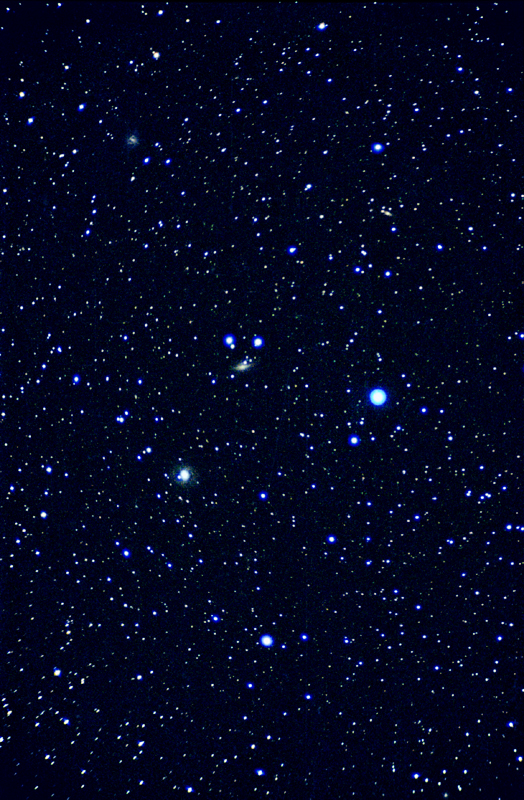
45 minutes exposure on Kodak Gold 400 film.
5" f/5 refractor, prime focus.
There are a number of other galaxies visible in the photograph below. Among the brightest are NGC 1055 to the upper right of M77, NGC 1087 to the left of M77, and NGC 1090, which is just above NGC 1087. Near the top right corner, is the face on barred spiral galaxy, NGC 1073.
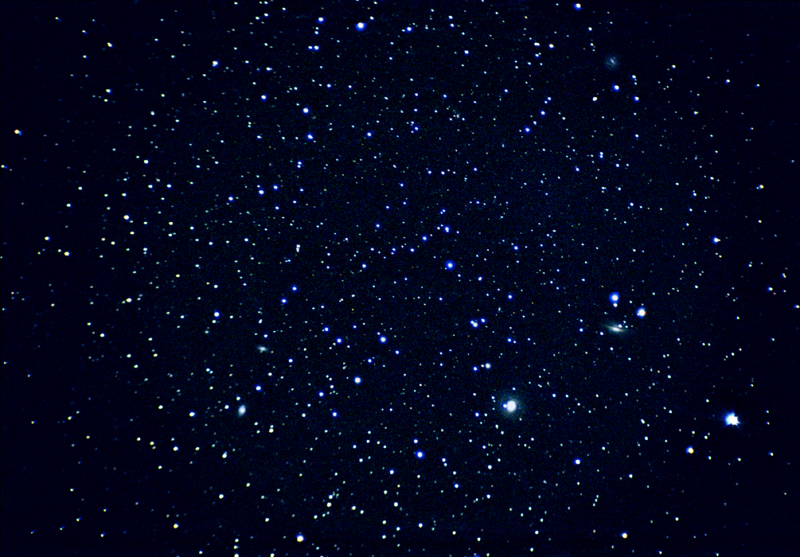
45 minutes exposure on Fuji Superia 400 film.
5" f/5 refractor, prime focus.
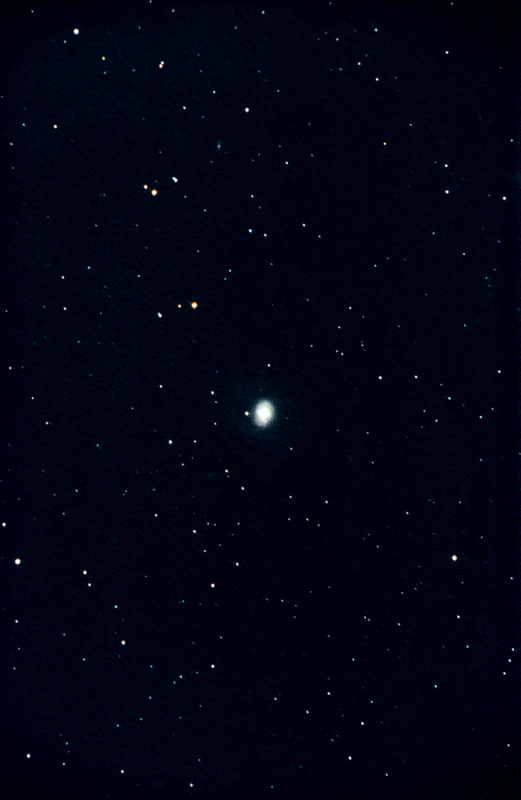
40 minutes exposure on Fuji Super HG II 400 film.
300mm f/6 newtonian, prime focus.
CCD Images
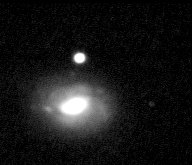
Combination of 3, 3 minutes exposures.
SBIG ST4 CCD camera. 300mm f/6 newtonian telescope at prime focus.
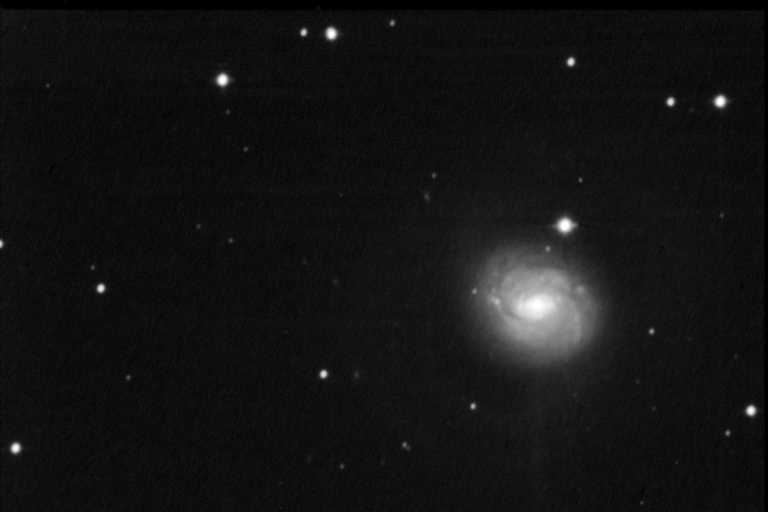
3 minutes exposure, Meade 416XTE CCD camera.
300mm f/6 newtonian telescope at prime focus.
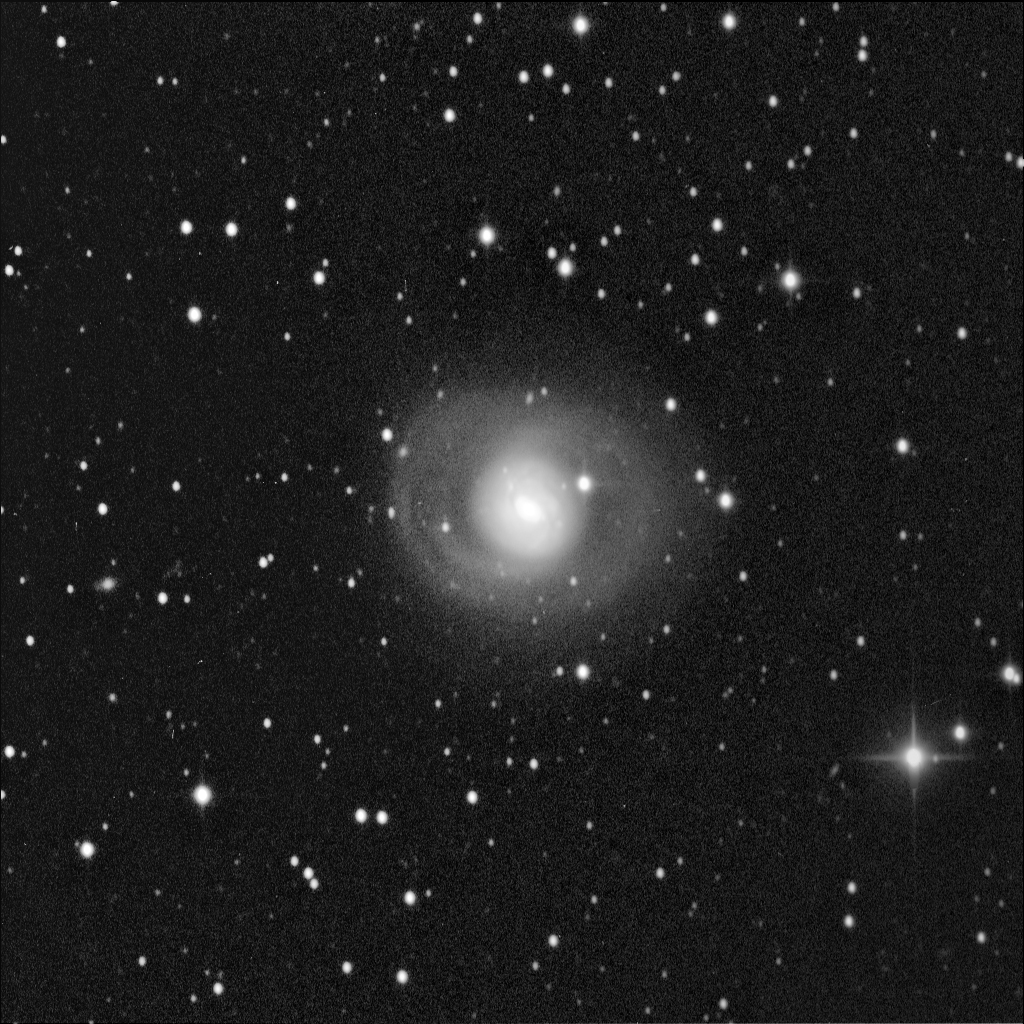
Combination of 5, 2 minute images.
SBIG STL-1001E CCD. 20" f/6.8 Dall-Kirkham cassegrain telescope at prime focus.
M77 is a Sayfert galaxy; that is, it has a very bright and active nucleus, with strong emission lines from large amounts of excited gas close to the core. This makes it an excellent target for spectroscopy and radial velocity determination. I have tried this a few times with students and it is a fun exercise.

Low resolution spectrum of M77.
60 minutes exposure. SBIG SGS spectrograph. SBIG ST8-XE CCD. 20" f/6.8 Dall-Kirkham Cassegrain at prime focus.
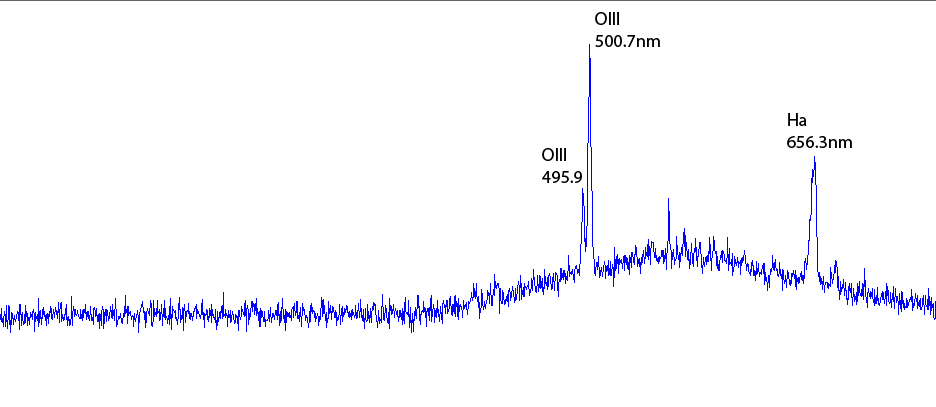
Graphical trace of the above M77 spectrum. The strong emission lines from the core are easily seen. Using this graph, a recession velocity of 945 km/s was deduced, a little below the accepted value of 1137 km/s. In order to get a better result, a spectrum at higher resolution is needed.

High resolution spectrum of M77.
60 minutes exposure. SBIG SGS spectrograph. SBIG ST8-XE CCD. 20" f/6.8 Dall-Kirkham Cassegrain at prime focus.

Graphical trace of the above M77 spectrum, centred on the OIII emission lines. Despite a total exposure of 60 minutes, the spectrum is still quite noisey. As a result, a rather inaccurate recession velocity of 1403 km/s was derived. Clearly longer integration time is required to get a spectrum of sufficient signal-to-noise ratio.










